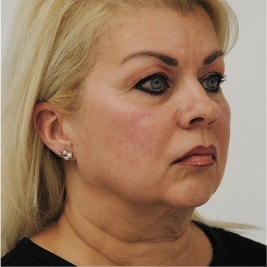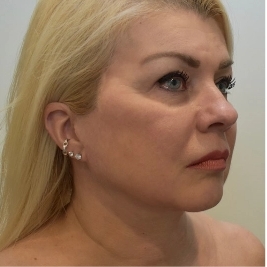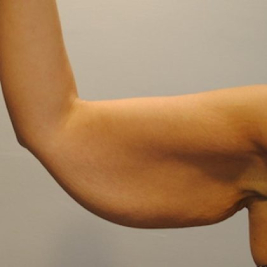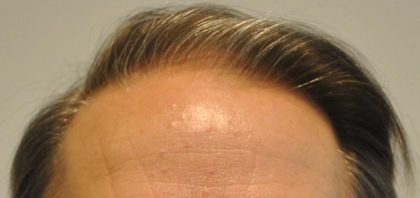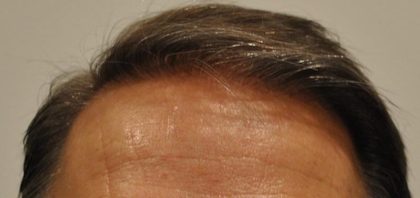Hair Transplants
Conveniently located to serve the areas of Montreal, Quebec

Dr. Doumit uses state-of-the-art surgical techniques to produce outstanding results in hair transplantation. Hair transplant in Montreal, Dr. Doumit has an incredible skill level in both transplantation and artistry to get you the best possible result. Dr. Doumit’s hair restoration techniques produce two results: a natural appearance and undetectability. Hair grafts should grow without visible evidence of surgery to the casual person. Furthermore, with follicular unit extraction, Dr. Doumit’s donor site is almost imperceptible (NO SCAR). Your hair transplant will look good for many years after surgery.
Contents
Before and After Photos
Procedure
Hair transplant surgery is performed on individuals who have generalized hair loss, a bald spot or recess of the hairline. Male pattern baldness hair typically grows only in a horseshoe around the head (hairline recession, vertex thinning on the crown or top of the scalp). However, female pattern hair loss is diffuse thinning of the hair on the head. Dihydrotestosterone (DHT), a natural hormone, is the main reason for both male and female hair loss. However, hairs on the back of the head are resistant to the effect of DHT. Hence, they are ideal for transplantation as they are genetically programmed to maintain their native color for a long time and never fall out. Dr. Doumit meticulously dissects these follicular hair units (naturally occurring bundles of 1 to 4 hairs that emerge from the scalp together) from the back of the head. He then precisely plants these follicular units, creating the most natural and undetectable hair growth possible.


A hair transplant will enhance your appearance and self-confidence.
I had 800 follicular unit grafts surgery with Dr. Doumit. It is been a year since the surgery. My hair has grown in very well. I am very happy with my choice.
Ideal Candidate
All hair transplant techniques move the patient’s own hair from the back of the head to the front. Hairs in the back of the head are ideal for transplantation as they are genetically programmed to maintain their native color for a long time and never fall out. Patients with male pattern baldness are ideal candidates for hair transplants. Women with diffuse hair loss are not good candidate for hair transplants, as they usually do not have enough quality hair on the back of the head. However, women with the following conditions are excellent candidates for hair transplant: Women with male pattern baldness, traction alopecia (hair loss due to traction), or cicatricial alopecia (hair loss at scar sites or due to a previous burn).
Treatment Types
The different types of hair transplant Ottawa’s surgery procedures used by Dr. Doumit include:
FOLLICULAR UNIT EXTRACTION:
Very small holes are made around each individual hair follicle in the back and side of the scalp that don’t exceed 1.0 mm in diameter. Each individual follicle will then be lifted with forceps from the donor section of the scalp and transplanted to bald spots. The scarring is far LESS VISIBLE than the strip technique. It is therefore more attractive to many patients, especially to those who choose to cut their hair very short in the back of the head.
FOLLICULAR UNIT TRANSPLANT (LINEAR STRIP METHOD):
A strip of scalp will first be removed from the back of the scalp (donor section). The wound will then be closed with resorbable sutures using a trichophytic closure technique, which produces a linear scar. The scar will become nearly imperceptible in most patients over time. The donor strip will then be divided under the microscope into naturally occurring small groups of 1,2,3 or 4 hair, called follicular units for hair transplantation. Dr. Doumit will then anesthetize the recipient scalp and make very small incisions, called recipient sites. The follicular unit grafts are then precisely placed into the recipient sites.
SCALP REDUCTION OR FLAP SURGERY:
After the scalp is injected with a local anesthetic, a section of bald scalp is removed and an adjacent flap of hair-bearing skin is lifted off the surface while still attached at one end. The hear-bearing skin is moved into the bald spot and sewn into place. Flap surgery yields immediate results. One flap usually has the ability to do the work of 350 grafts.
Details
Hair transplant in Montreal is performed as an outpatient procedure with the use of local anesthesia. Dr. Doumit will design and mark your new hairline with your active involvement. The donor zone (back of the head) is trimmed and anesthetized. The hair is removed either individually as micro grafts (Follicular Unit Extraction) or as a strip of skin (Follicular Unit Transplant), which is later divided individually.
1)Donor Site: If a strip of hair is removed, the incision is then stitched up. If the hair is removed individually, there will be no incision and no scar.
2)Transplanting the hair grafts. If a strip of hair is used as donor hair, tiny grafts are divided for hair transplant surgery into your balding areas.
3)Recipient Site: The recipient’s scalp is anesthetized and small slits of about 1 mm are made in the scalp using a needle. The hair follicles grafts are then precisely inserted into the slits to ensure that the transplanted hair will grow in a natural direction.
After the hair transplant surgery is complete, your scalp will be cleansed and covered with absorbent gauze. You may have to wear a pressure bandage for 48 hours after the procedure or frequently spray saline solution onto the planted area to help with healing.
Follicular Unit Extraction with microslits is the preferred hair restoration technique performed by Dr. Doumit. It is the state-of-the-art technique of hair restoration surgery. It eliminates donor site scars and almost all the drawbacks of previous surgical techniques.
Results
Hair transplant surgery does not produce immediate results. In the majority of patients, the hairs fall out of the grafts after hair replacement surgery. Hair will start to regrow three months after the procedure. The donor sites in follicular unit extraction hair transplant leave minimal or no scar. In a follicular unit transplant, the incision gradually heals to leave a linear scar that is concealed by the hair around the site. Generally, multiple hair transplant procedures may be necessary to achieve satisfactory fullness. At least six months is usually recommended between each session
Recovery
Dr. Doumit goes to great lengths to minimize discomfort during the procedure. Dr. Doumit prescribes strong pain medication for use at home. Most of our patients do not use them at all.
Patients can return to work a few days after surgery. Some patients may have facial and eyelid swelling
Safety
All surgical procedures carry some risk. Possible complications from hair transplant surgery include Poor growth of hair follicles, unnatural appearance of transplanted hair, scarring at the donor site or recipient site, tightness, infection, bleeding, and skin necrosis.
Cost
9,500$ per Session
